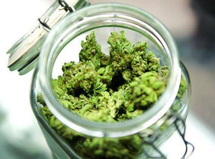|
Currently, 38 states have Medical Cannabis laws, and 23 states have adult recreational laws. Whether smoking a joint to relax after a hard day of work or ingesting Cannabis oil to stop seizures, it’s clear that many consumers benefit from the health and wellness effects of using Cannabis.
A few decades ago, public attitude regarding Cannabis shifted. The notion that sick people should be allowed to use a relatively safe plant signaled the beginning of the Cannabis movement. Compassion, caregiving, and community were hallmarks. However, issues of access, safety, and consistency arose as the Cannabis industry transitioned from traditionally illegal exchange to tested, regulated, and taxed Cannabis sales. In time, consumers did not want to justify their use to a profession of uninformed and inexperienced healthcare professionals who had ignored Cannabis science despite its apparent usefulness. Consequently, recreational or adult use laws were implemented. How have the recreational laws affected access by Medical Cannabis users? Below are three stories from three different states (two states and D.C.) that highlight how recreational laws may have affected Medical Cannabis users. The first story is from Michigan with a headline that reads “Medical Cannabis Pioneered Legal Weed in Michigan. Now it’s Withering Away.” by Dustin Walsh from Crains Grand Rapids Business. In Michigan, medical Cannabis sales are down 71% from one year ago and 86% from two years ago. The average cost of an ounce is down 52% over the last year to $102. While the medical market declines, Michigan’s adult use market is hitting new heights selling $270 million in July alone and expecting to surpass $3 billion this year, second only to California’s market. Ankur Rungta, CEO of C3 Industries, a vertically integrated operator with 13 high profile dispensaries, explains, “For medical [sales] to really drive a comeback there would need to be differentiation. It’s the same product on both sides (medical or recreational).” Rungta believes that the medical market won’t revive until more research is done on Cannabis products. The second story is from Minnesota, with a headline from MinnPost. “With Legalization of Recreational Cannabis What Does That Mean for Medical Cannabis in Minnesota,” by Peter Callahagn. The story features Minnesota patient Patrick McClellan, who is excited to be installing a hydroponic system to grow his own home Cannabis. “Home grow is a game changer for patients,” says McClellan. With the passage of new recreational laws, Minnesota Medical patients have ended up with the best of both worlds. A recent law will improve access and possibly lower prices for all consumers. “Patients who have been going to two medical providers for the last nine years have been extremely limited,” says McClellan. RISE, owned by Green Thumb Industries (GTI) and GREEN GOODS, owned by Vireo Health, are the only two medical Cannabis operators in Minnesota with 8 stores each throughout the state. The new recreational bill increases access by adding more dispensaries. It was also designed to limit the market dominance of the two main operators, but a lobbying effort by GTI and VIreo convinced legislators to maintain vertical integration and allow the two largest organizations to also sell to the recreational market. “Our medical market is already pretty small,” explained State Representative Zack Stephenson. “We risked losing a medical industry all together.” The third story is from the Washington Post where the headline is “Learning the Highs and Lows of D.C.’s Medical Cannabis Lingo,” by Courtland Milloy. The author is touring a DC dispensary called Anacostia Organics in the Southeast of Washington D.C. In DC, patients pay $30 to get a self-appointed Medical Cannabis card. This past July neighboring Maryland passed a recreational law. According to dispensary owner Linda Mercado Greene, “People from DC began going to Maryland because they could buy Cannabis without spending $30 for a medical card.” (Although, carrying Cannabis across state lines is a federal offense.) Referring to Maryland’s law, Greene says, “It’s kicking our buts, but we hope things will even out soon.” Although products are the same in both recreational and medical Cannabis industries, these laws have had different effects in each state. There doesn’t seem to be much distinction between the two industries except for what laws and regulators make of it. In our exuberance for legalization, have we created a distinction between recreational and medical Cannabis that doesn’t exist? From medical to health and wellness to consumer product good industries, what we all sorely missing is more Cannabis research and education. People know why they use Cannabis. Because of a relatively good safety profile people can use it without judgment, oversight, or adverse effects. Rather than guidance by a medical industry influenced by profit over science, consumers can now grow their own. Meanwhile, it doesn’t hurt to follow the science as we apply new analysis to an old plant. |
AuthorJean Talleyrand, M.D., Archives
September 2023
Categories |
Mailing Address: MediCann 1336 Willard Street, C • San Francisco, CA 94117
Important Disclaimer!
The information contained in this site does not intend to replace any medical advice or care by a trained physician.
Any use of this information is solely the the responsibility of the user.
Important Disclaimer!
The information contained in this site does not intend to replace any medical advice or care by a trained physician.
Any use of this information is solely the the responsibility of the user.
© COPYRIGHT 2015. ALL RIGHTS RESERVED.


 RSS Feed
RSS Feed


